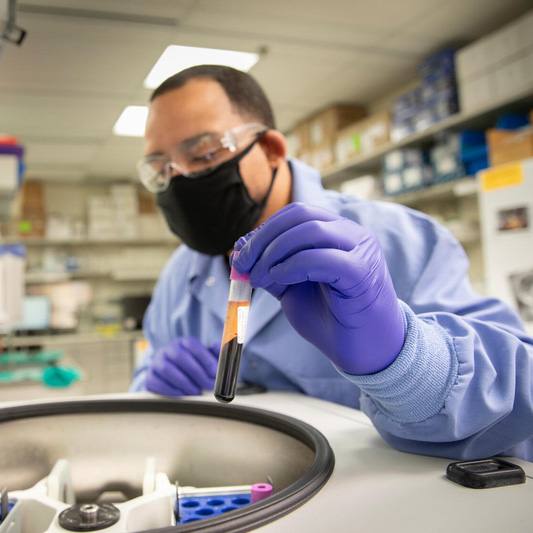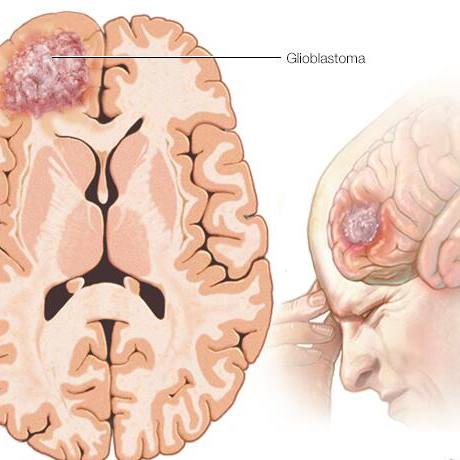-
Research
Transforming the practice of opioid prescribing — for kids

For children, the opioid epidemic can be about adults in their lives with opioid use disorder or accidental overdoses when a child finds their parent's pill bottle. But kids can also get addicted to opioids.
Mayo Clinic's Courtney Baker, M.D., an orthopedic surgical resident, and his mentor, Todd Milbrandt, M.D., a pediatric orthopedic surgeon, decided to lessen the chances of these happenings. Together with other colleagues from Orthopedic Surgery and the Mayo Clinic Robert D. and Patricia E. Kern Center for the Science of Health Care Delivery, they led the implementation and evaluation of tiered prescribing guidelines for discharge opioid prescriptions following common pediatric orthopedic procedures.
In a recent article in the Journal of Pediatric Orthopedics, the team describes their findings.
"The first shocking thing we found was a 60% reduction in opioids prescribed based on this simple intervention," says Dr. Baker, the study's first author. "This means a drastic reduction in the amount of extra opioids available in the home."
"Second, adherence to the guidelines was over 90% by providers," he continues, "which means that these guidelines were easily adopted and maintained with minimum education or training required."
The team worked with Mayo's pediatric orthopedic surgeons to develop a tiered list of 28 procedures — according to the invasiveness of the procedure and a typical postprocedural opioid requirement. They then developed a tiered dosing table for oxycodone, and another for hydrocodone/acetaminophen, based on the weight of the patient and the level of the procedure. These guidelines were distributed across Mayo's Practice in January 2018 and implemented during that year.
All patients, ages 0-17 who underwent one of the 28 procedures in 2017 — prior to guideline development — were compared to all similar patients from 2019.
The source of research inspiration
As with all things at Mayo Clinic, the researchers' main focus was "The needs of the patient come first."
"These children did not need the excessive opioid prescriptions that we were using," says Dr. Milbrandt. "Our guidelines now create a framework to give patients what they need based on how much of a 'surgical dose' they have received."
"We know keeping opioids out of the home is one of the best ways to prevent misuse," says Dr. Baker.
"Excess opioid prescriptions have been linked to abuse and addiction," continues Dr. Milbrandt. "There are studies linking childhood exposure to opioids and future abuse or addictions as adults."
Drs. Baker and Milbrandt also knew that orthopedic surgery is one of the largest prescribers of opioids across all medical specialties. They looked to their colleagues in the adult practice for an idea where to start.
"The orthopedic surgeons who care for adults here at Mayo Clinic, led by Dr. Tad Mabry, created guidelines and showed a significant reduction of opioid prescribing," says Dr. Milbrandt. "We knew we wanted four tiers so we could mirror what the adult practice was doing."
Next steps for the investigation
"I want to emphasize that this is really a part of prescribing quality improvement project," says Dr. Milbrandt, "and was our first time around the plan, do, study, act cycle."
Now they will go back and review the procedures in each tier and evaluate if any adjustments should be made. The team also plans to ensure preoperative counseling staff incorporate the guidelines and related findings in their conversations with families.
"We also would like to make some simple handouts to educate families when they return home about what to expect regarding pain, when to take pain medications, and so forth," says Dr. Baker. "The key will be to keep things simple — simple interventions can have an outsized impact."
Dr. Milbrandt cites the power of collaborative research as key to their successful quality improvement initiative.
"This project shows the power of research at Mayo Clinic. It was a true collaboration between the clinical practice and the Kern Center. That type of cross pollination is what created this impactful research," he says. "In addition, Dr. Baker's contribution shows the talent we have in those that choose to train at Mayo Clinic in orthopedic surgery — he played a major role in getting this project to press."
The Mayo Clinic Kern Center for the Science of Health Care Delivery is fully embedded in Mayo Clinic's medical Practice. Its scientists collaborate across the Practice to identify and solve challenges for patients, providers and the health care system at large.
The broader practice group has become engaged with the conversation this first project started, and the investigators see opportunities for further improvement at Mayo. They are also working with the Pediatric Orthopaedic Society of North America, discussing how to implement and disseminate a practice guideline leading to practice transformation across the country and a lasting impact on the nation's health.
###









